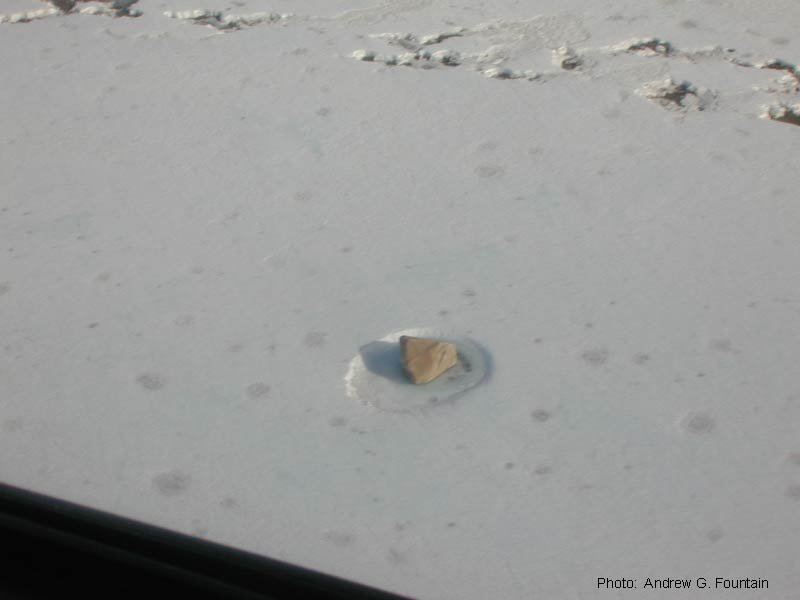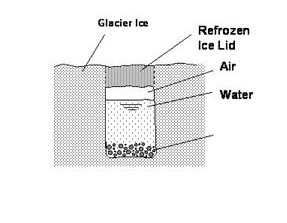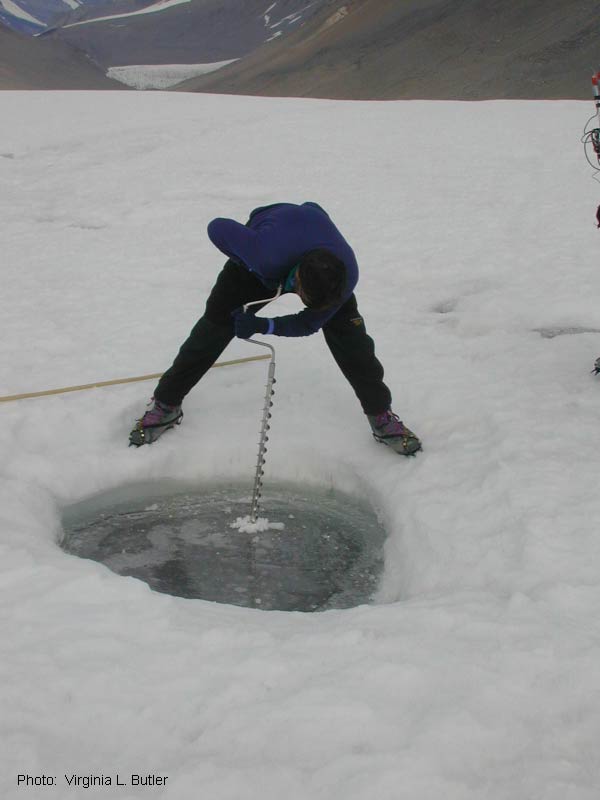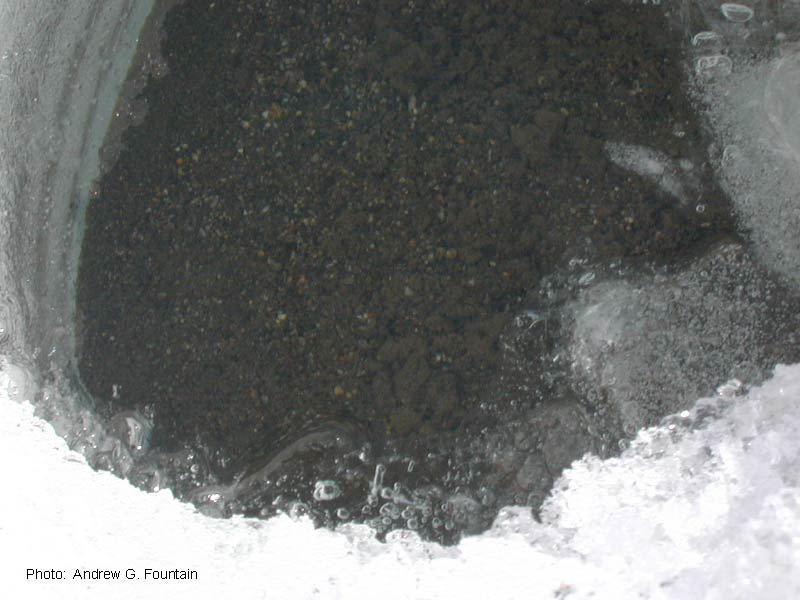

Cryoconite holes in the McMurdo Dry Valleys, Antarctica
In contrast cryoconite holes on
glaciers in more temperate regions, cryoconite holes in the McMurdo Dry Valleys,
Antarctica, are typically covered with a lid of ice. As the sediment melts
in an ice cover immediately forms and continual melting occurs beneath the ice
lid (see the 'Experiment'). This is due to the
surface energy balance in the environment of the dry valleys (air temperatures
below freezing and windy) which favor the formation of ice surfaces.
The continued subsurface melting is the result of a "greenhouse"
effect whereby the rate of solar heating of the sediment exceeds heat loss
through the ice. Sufficient heating raises the subsurface ice temperature
and to the melting temperature.


This photo is from a helicopter over Taylor Glacier. The rock in the center of the photo is about 1.5 m in diameter. The discolored patches on the ice are ice-covered cryoconite holes.

This cryoconite hole on Canada Glacier is being drilled to investigate the interior. A period of warm weather had just ended a few days prior to this photograph. During the warm weather the ice lid over the hole had melted. Since that time, a new ice lid has formed.

The ice surface was broken (pieces to the right) and sediment covers the bottom of the hole, about 30 cm below the glacier surface. Looking carefully, you will note two different textures. One is a grainy multicolored texture of the cryoconite, The other texture is a finer grained pillow-like texture of a uniform drab color, this is cyanobacteria.

On Canada Glacier, large basins can develop on the ice. As the ice walls melt laterally, they intersect cryoconite holes in the ice surface. The dark, dirty patches on the wall that Virginia Butler is looking into are cryoconite holes. The water and cryoconite contents of the holes are dumped into the basin.

This is a close up side view of one of the holes. You can see the contents spilling out at the bottom. The bottom of the cryoconite hole is flat. The light blue at the back of the cryoconite hole is sunlight coming through the ice tickets.